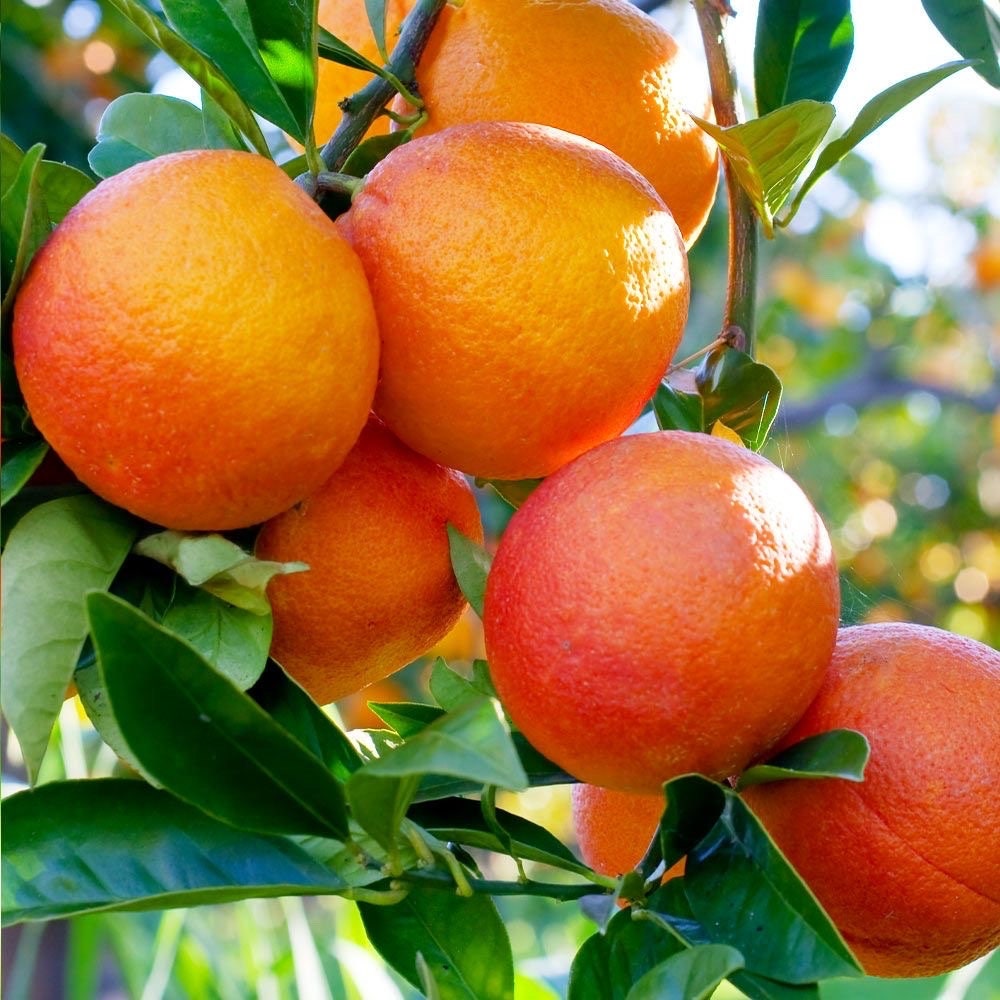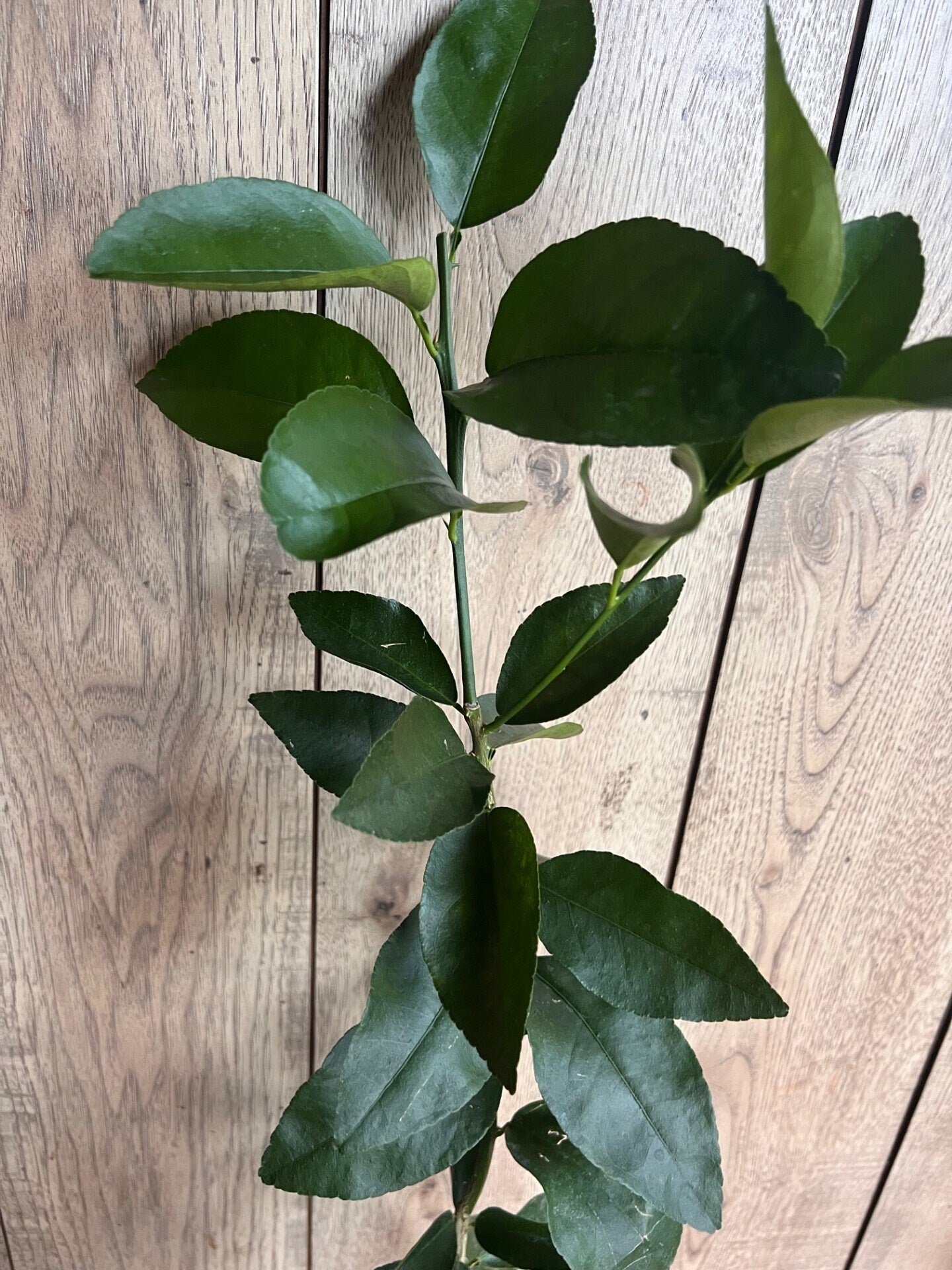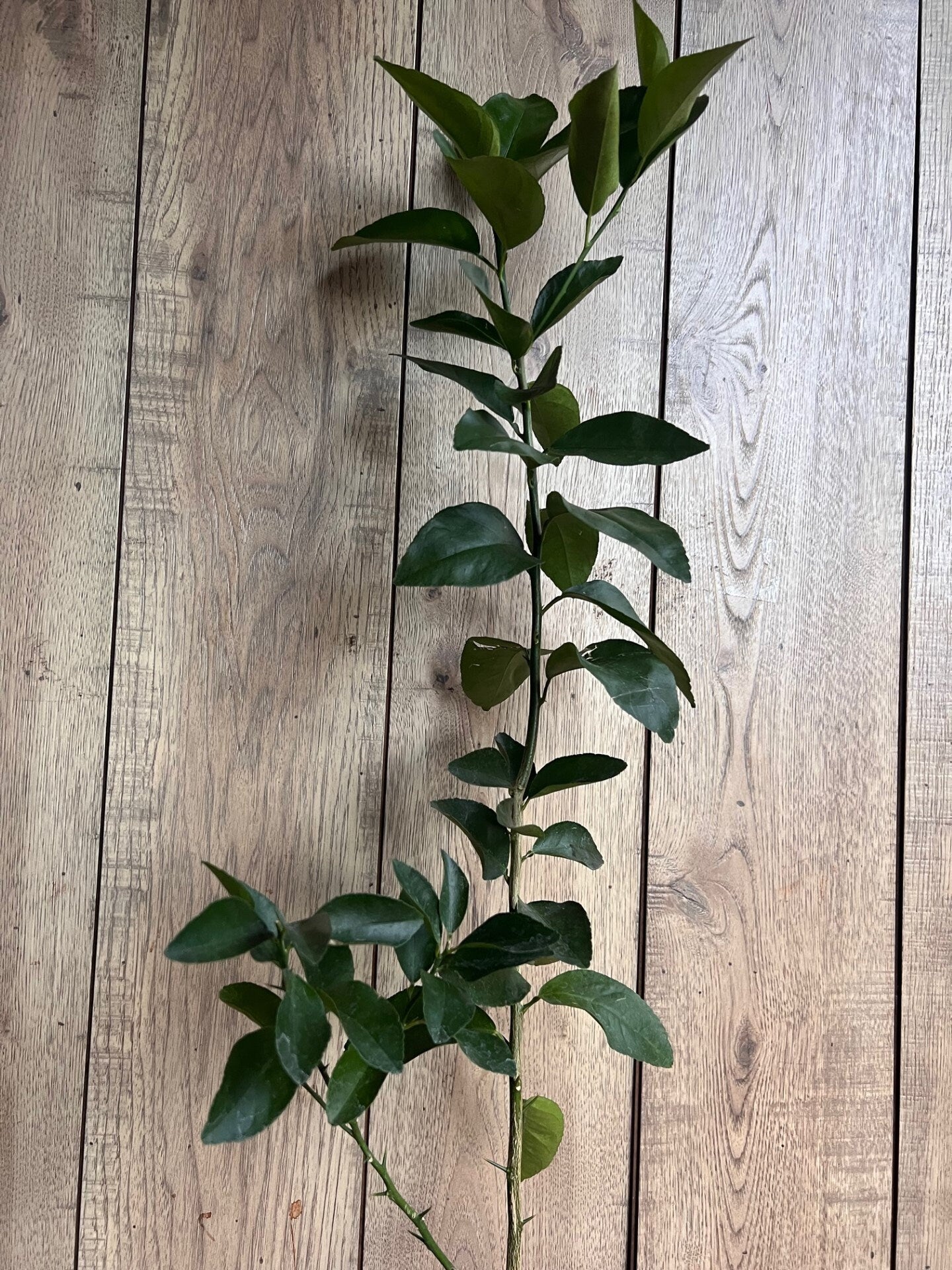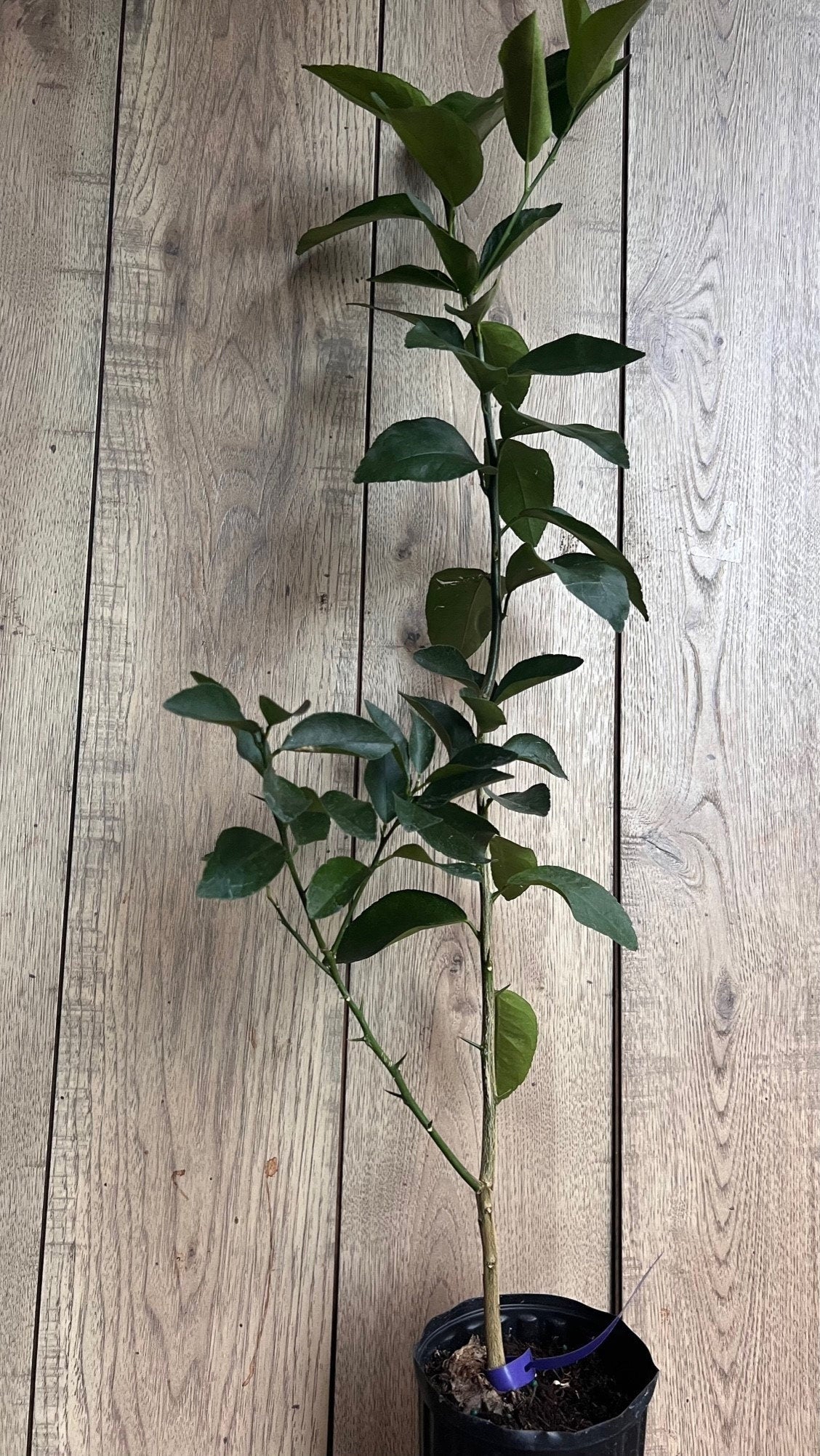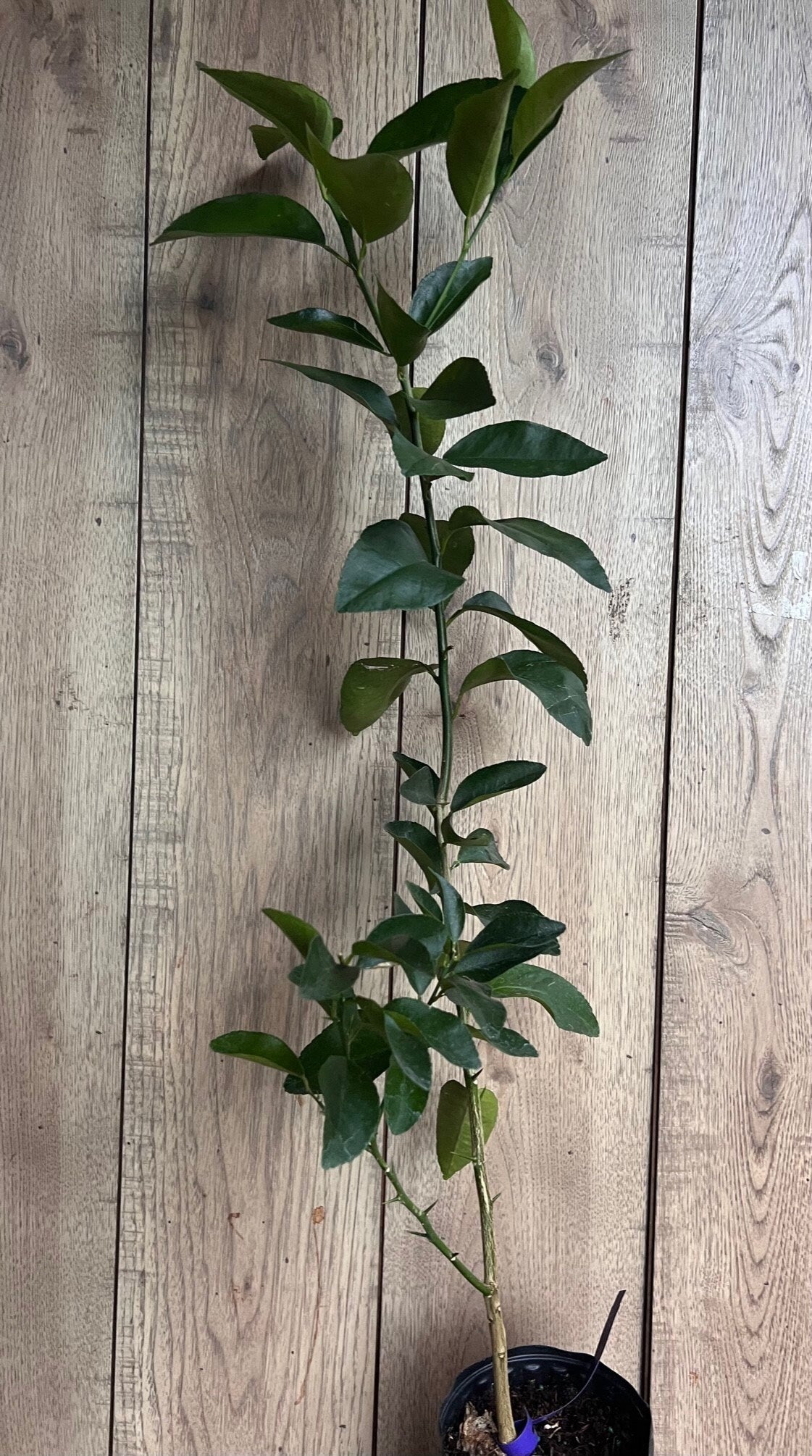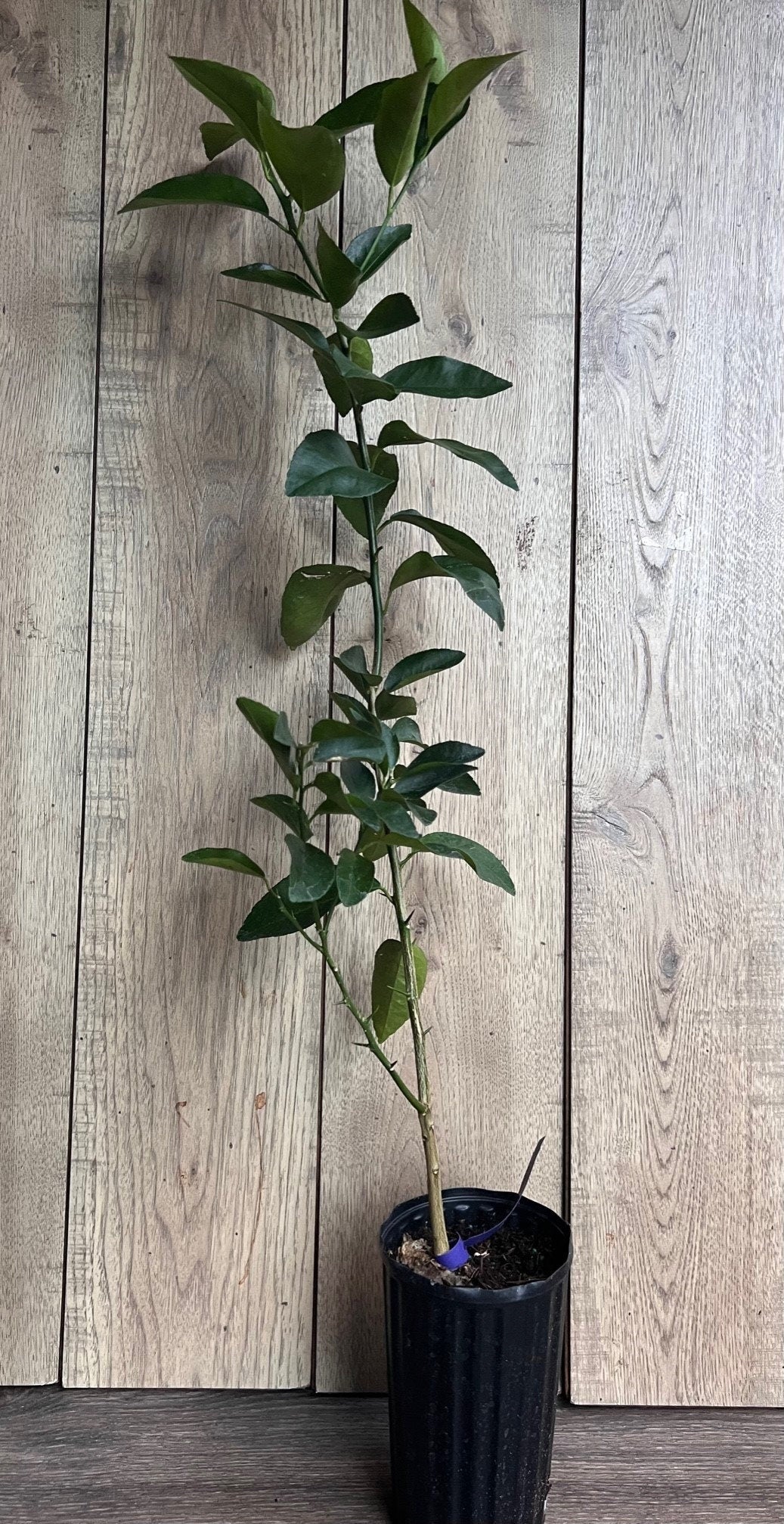1
/
of
6
Blood Orange Tree in half Gallon Pot, Grafted Sinensis Moro, Florida Shipping Only
Blood Orange Tree in half Gallon Pot, Grafted Sinensis Moro, Florida Shipping Only
Regular price
$48.70 USD
Regular price
$64.94 USD
Sale price
$48.70 USD
Unit price
/
per
Shipping calculated at checkout.
Couldn't load pickup availability
Note: You will receive one Blood Orange Grafted Tree in a 1/2-Gal pot, similar to the pictures.
The Blood Orange is a popular variety of orange known for its deep red flesh and tangy-sweet flavor. It’s visually striking and has a distinct flavor compared to regular navel oranges. Growing Blood Oranges at home can be rewarding if you provide the right care. They are best suited to warm, sunny climates but can be grown in containers and brought indoors in cooler regions.
Light Requirements
- Full Sun: Blood Orange trees need at least 8 hours of direct sunlight per day to thrive and produce fruit.
- Outdoor Growing: Choose a location with abundant sunlight, such as a south- or west-facing spot.
- Indoor Growing: Place near a bright window with direct sunlight. Use grow lights during winter if natural light is insufficient.
Watering
- Consistent Moisture: Water regularly but allow the soil to dry slightly between waterings. Avoid waterlogged roots as they can lead to root rot.
- Watering Frequency: Water deeply every 7-10 days during the growing season (spring/summer). In winter, reduce watering as growth slows.
- Draining Soil: Ensure the soil drains well. If in a container, the pot must have drainage holes.
Temperature
- Warm Temperatures: Blood Orange trees thrive between 70°F to 85°F (21°C to 29°C). They’re sensitive to frost and should be kept above 28°F (-2°C).
- Indoor Care: In colder climates, grow in a pot and move it indoors during winter, placing it in a sunny, warm spot.
Soil
- Well-Draining Soil: Use loamy soil that retains moisture but drains well. If growing in a container, mix regular potting soil with sand or perlite for better drainage.
- Soil pH: Blood Oranges prefer slightly acidic to neutral soil (pH 6.0 to 7.5).
- Container Soil: Use citrus-specific potting mix or amend regular soil for proper drainage.
Fertilizing
- Regular Feeding: Fertilize during the growing season (spring through summer) to promote healthy growth and fruit production.
- Fertilizer Type: Use a balanced fertilizer (e.g., 10-10-10 or 20-10-10) with micronutrients like iron, zinc, and magnesium. Organic options like compost or fish emulsion work too.
- Fertilizing Frequency: Apply fertilizer every 4-6 weeks during the growing season. Reduce or stop fertilizing in fall and winter when the tree is dormant.
Pruning and Maintenance
- Pruning: Prune to maintain shape, remove damaged branches, and improve air circulation. Prune after fruit harvest (late winter/early spring).
- Thinning: Thin overly dense branches to allow sunlight and improve airflow, reducing fungal disease risk.
- Removing Suckers: Remove root suckers that grow at the base to maintain tree health and direct energy to the main tree.
Pollination
- Self-Pollinating: Blood Oranges are self-pollinating but benefit from bees or other pollinators.
- Indoor Pollination: If growing indoors, hand-pollinate using a small paintbrush to transfer pollen between flowers.
Pests and Problems
-
Common Pests: While pest-resistant, Blood Orange trees may attract:
- Aphids
- Mealybugs
- Spider mites
- Citrus scale
- Pest Control: Spray with insecticidal soap or neem oil. Inspect leaves and branches for pests.
- Citrus Leaf Miners: These pests cause squiggled or deformed leaves. Control by removing damaged leaves and using systemic insecticides if necessary.
- Citrus Greening Disease: Caused by bacteria spread by Asian citrus psyllids, this disease leads to yellowing leaves and poor fruit development. Consult local agricultural services for advice.
Fruit Development and Harvesting
- Time to Fruit: It takes 2-3 years for a grafted Blood Orange tree to fruit, compared to 3-5 years from seed.
- Harvesting: Blood Oranges ripen in winter, from December to March. Look for full color and slight softness when squeezed. Ripe fruit can be harvested with a gentle twist or pull.
Container Growing
- Growing in Containers: If in a colder climate or limited space, grow in a pot. Choose a container at least 18-24 inches in diameter with drainage holes.
- Repotting: Repot every 2-3 years to refresh soil and allow space for growth. Always use citrus-specific or well-draining potting mix.
- Winter Care: Keep the pot near a bright window with temperatures between 65°F to 70°F (18°C to 21°C). Ensure maximum sunlight exposure during winter.
Toxicity
- Non-Toxic to Pets: Blood Orange trees are non-toxic to cats, dogs, and other pets. However, it’s a good idea to keep the fruit and plant out of reach, as pets may be attracted to the scent or taste.
Share
